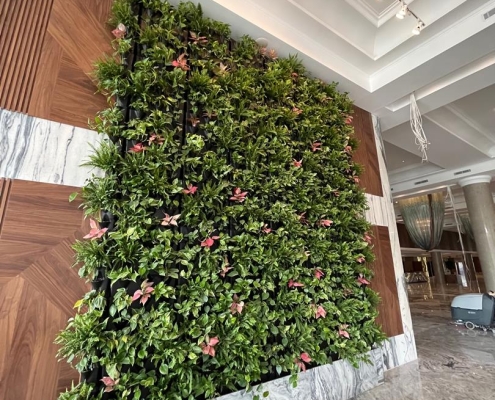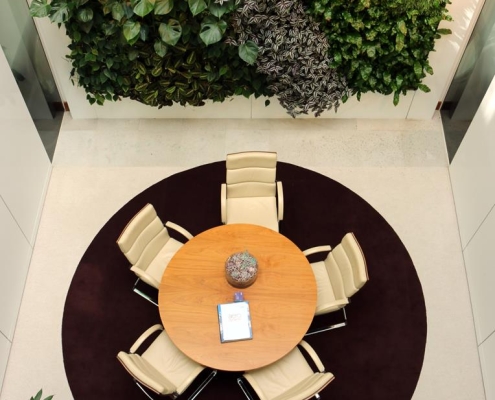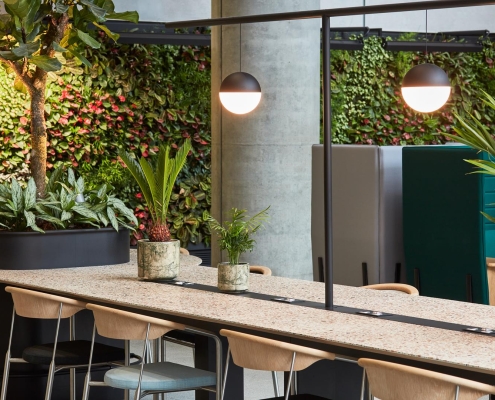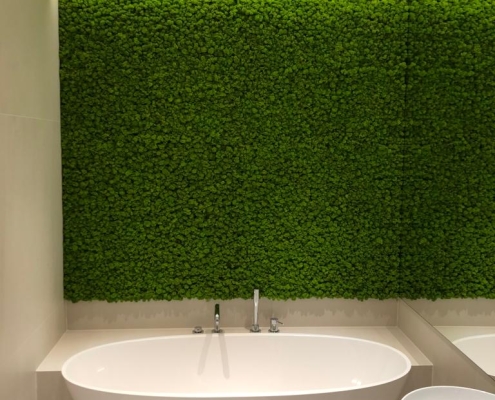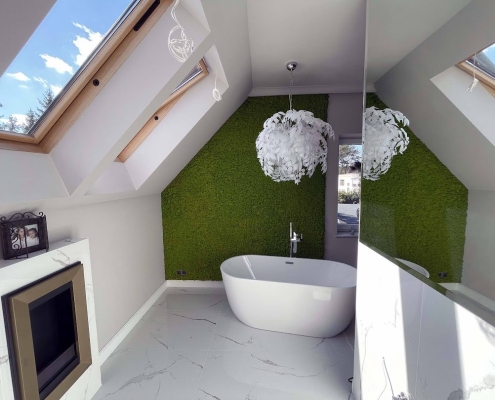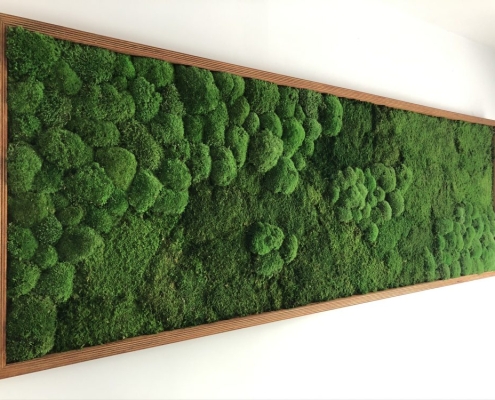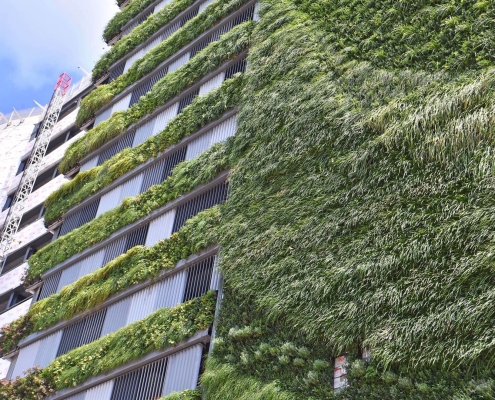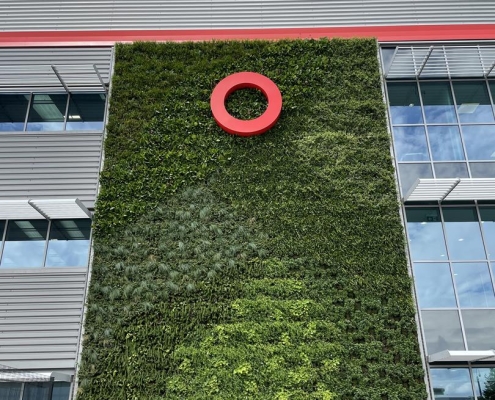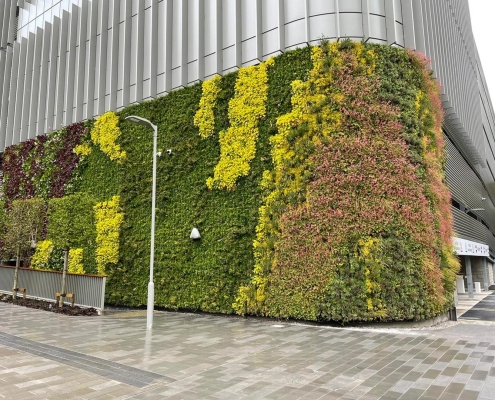Green plant wall
Plant wall, also known as a vertical garden, is a structure or installation consisting of vertically growing plants, usually placed on the outside wall of a building or freestanding structure. It is an increasingly popular solution in urban landscape design and landscaping to use vertical space to grow plants.
Walls of plants can range in form and size from small modules mounted on walls to large, complex installations on building facades. The plants used for such structures can be selected according to environmental conditions, aesthetic preferences and the function the plant wall is intended to serve (e.g. decorative, insulating, improving air quality).
There are many benefits of having plant walls, including improving aesthetics, increasing green space in the urban environment, reducing noise and air pollution and improving mental health through contact with nature. In addition, plant walls can serve as thermal insulation, helping to improve the energy efficiency of a building.
Green wall of plants at home
Vertical garden in the home is not only an aesthetically pleasing addition to the interior, but also a practical solution with many benefits for the health and well-being of the household. Here are a few reasons why you should have a green plant wall in your home:
- Improving air quality: plants used in green walls are excellent air filters, absorbing harmful chemicals and pollutants from the air, such as formaldehyde, benzene or toluene.
- They improve the air quality in the home, reducing the risk of allergies, asthma and other respiratory conditions.
- Regulation of atmospheric humidity: Plants have the ability to regulate atmospheric humidity through the process of transpiration, which is the release of water vapour from the leaves into the environment. A vertical garden can help maintain optimum humidity levels indoors, which is particularly important in dry or air-conditioned interiors.
- Noise reduction: dense vegetation on a vertical fence can act as a natural sound absorber, reducing noise from outside and sounds generated inside the room. This is particularly useful in flats located in busy neighbourhoods or along streets.
- Aesthetically pleasing decorative element: green wall adds a unique charm and freshness to the interior of the home, creating a pleasant and relaxing environment. Plants can be chosen according to your aesthetic preferences and interior design to create a personalised space.
- Optimum use of space: the green wall is the perfect solution for those who want to make the most of the available space in their home. It can be placed on a free wall in the living room, corridor, bedroom or even kitchen without taking up any extra floor space.
- Improving wellbeing: contact with nature has a proven beneficial effect on mood and mental health. A green wall in the home can help to reduce stress, improve mood and increase a sense of calm and harmony.
It is therefore worth considering the creation of a green plant wall at home to enjoy its many benefits for health, aesthetics and everyday comfort. A plant painting also available in our range will also prove to be a great solution.
Plant wall in the garden
Creation of a green plant wall in the garden can bring many benefits, both for the aesthetics of the space and for the environment. Here are some reasons why you should consider building a green wall of plants in your garden:
- Aesthetics: a green wall adds charm and beauty to a garden, creating a striking and pleasing space. The plants that fill the wall add texture, colour and variety, making gardening more interesting and visually appealing.
- Noise reduction: dense vegetation on a green wall can act as a natural sound barrier, helping to absorb ambient sounds. This can reduce noise from the street or neighbourhood, helping to create a peaceful and relaxing environment in the garden.
- Protection from the wind: a green wall can also act as protection from the wind. Dense vegetation can soften the force of the wind, creating a microclimate that is more conducive to plants and people using the garden.
- Improving air quality: plants on a green wall absorb carbon dioxide and emit oxygen, which contributes to improving the air quality in the garden. In addition, plants can also filter air pollutants and remove harmful chemicals from the environment.
- Attracting wild life: a green wall can provide excellent shelter and food for a variety of birds, insects and small mammals. This can help to increase biodiversity in the garden and create an environmentally friendly place for wild life.
Increased privacy: Dense vegetation on a green wall can also provide additional privacy in the garden, shielding it from the view of neighbours or casual passers-by.
Green wall in urban spaces
- Reducing the urban heat island effect: plants absorb heat and moisture, which can help to reduce the urban heat island effect, a phenomenon in which urban areas are significantly warmer than surrounding rural areas.
- Improving sound insulation: green walls can help to dampen street noise and improve acoustic comfort in an urban setting.
- Encouraging physical activity: green plant walls can encourage physical activity and relaxation outdoors. They attract people to spend time outdoors, which can contribute to the health and wellbeing of city residents.
- Environmental protection: creating green walls can contribute to environmental protection by increasing biodiversity, improving soil and water quality and reducing pollution.
- Improving the urban climate: green walls can help regulate the microclimate in urban spaces by reducing air temperature, increasing humidity and creating more comfortable conditions for people and plants.
Green plant walls in your environment
The value of green walls in interiors, gardens and urban spaces is immense and affects various aspects of social, ecological and economic life. Their creation can bring many benefits for people and the environment. Are you thinking about implementing a green wall? Feel free to contact us.

